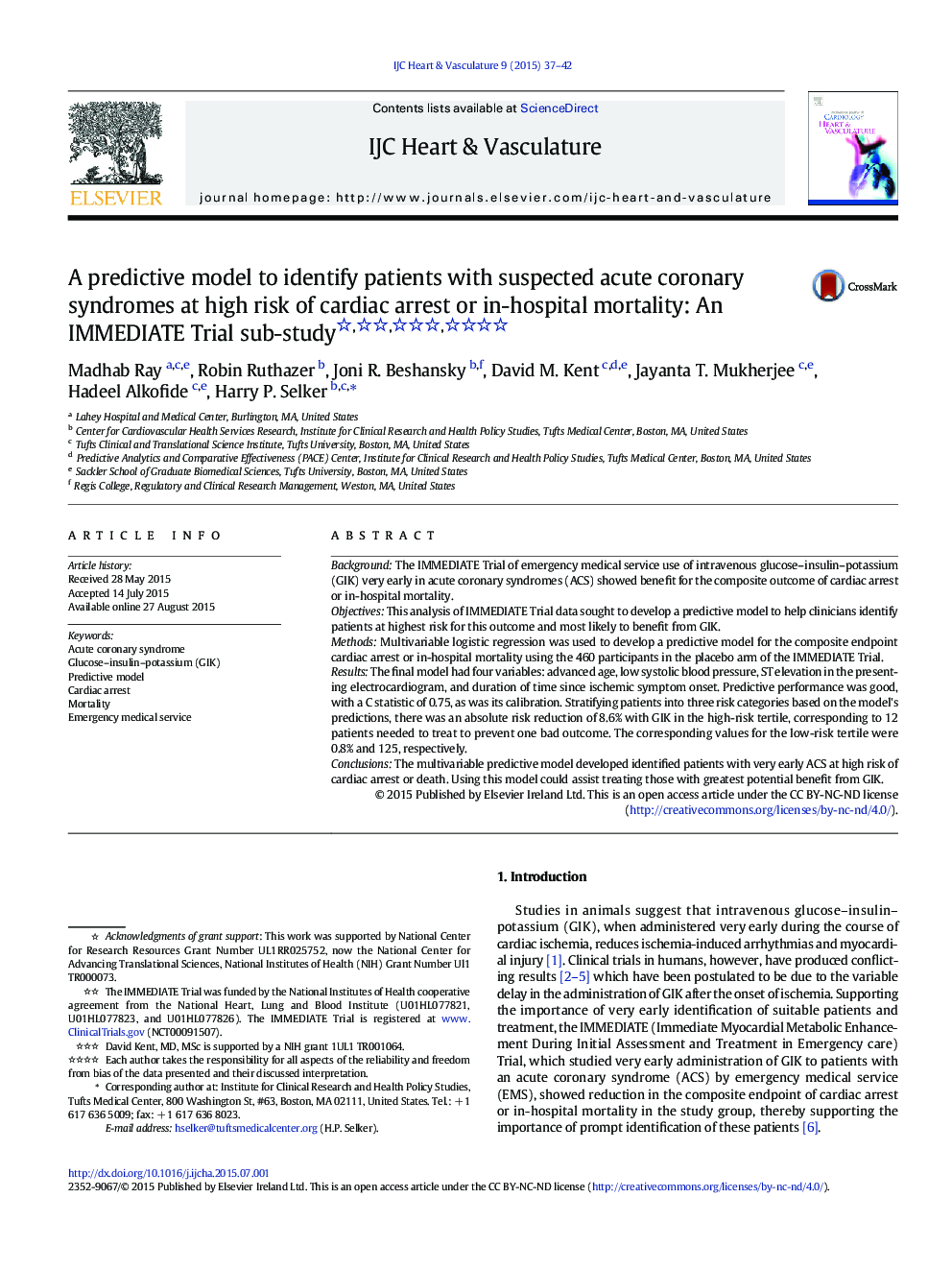| Article ID | Journal | Published Year | Pages | File Type |
|---|---|---|---|---|
| 2926961 | IJC Heart & Vasculature | 2015 | 6 Pages |
•Predicting the composite outcome of cardiac arrest or death in patients with ACS•The developed predictive model showed good discrimination and excellent calibration.•A simple risk scoring system was designed for use by the EMS at the first encounter.•Glucose–insulin–potassium therapy reduces the overall odds of the composite outcome.•Absolute risk reduction may be more pronounced in patients with higher risk.
BackgroundThe IMMEDIATE Trial of emergency medical service use of intravenous glucose–insulin–potassium (GIK) very early in acute coronary syndromes (ACS) showed benefit for the composite outcome of cardiac arrest or in-hospital mortality.ObjectivesThis analysis of IMMEDIATE Trial data sought to develop a predictive model to help clinicians identify patients at highest risk for this outcome and most likely to benefit from GIK.MethodsMultivariable logistic regression was used to develop a predictive model for the composite endpoint cardiac arrest or in-hospital mortality using the 460 participants in the placebo arm of the IMMEDIATE Trial.ResultsThe final model had four variables: advanced age, low systolic blood pressure, ST elevation in the presenting electrocardiogram, and duration of time since ischemic symptom onset. Predictive performance was good, with a C statistic of 0.75, as was its calibration. Stratifying patients into three risk categories based on the model's predictions, there was an absolute risk reduction of 8.6% with GIK in the high-risk tertile, corresponding to 12 patients needed to treat to prevent one bad outcome. The corresponding values for the low-risk tertile were 0.8% and 125, respectively.ConclusionsThe multivariable predictive model developed identified patients with very early ACS at high risk of cardiac arrest or death. Using this model could assist treating those with greatest potential benefit from GIK.
